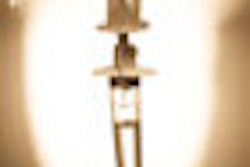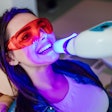
There is a growing demand for dentist anesthesiologists to treat pediatric patients but a lack of available practitioners able to meet it in every region of the U.S., according to a study in Anesthesiology Progress.
Nearly 70% of the pediatric dentists that participated in the study stated that they would use a dentist anesthesiologist if one were available (AP, Spring 2012, Vol. 59:1, pp. 12-17).
"This shows that there's definitely a need for more dental anesthesia programs," co-author James Jones, DMD, PhD, a clinical associate professor at the department of oral medicine, pathology, and radiology at Indiana University's School of Dentistry, told DrBicuspid.com. "There are only about 10 or 11 dental anesthesiology programs in the U.S., and state legislatures have to make the decision to allow dental anesthesiologists to work."
— James Jones, DMD, PhD, Indiana University School of Dentistry
Anesthesiology Progress published the work of Dr. Jones et al along with another study, also conducted at Indiana University, examining the demand for sedation and general anesthesia in pediatric dentistry (Spring 2012, Vol. 59:1, pp. 3-11). After surveying directors of dentist anesthesiologist and pediatric dentistry residencies, the researchers' findings support Dr. Jones's position.
"Pediatric dentistry residency directors perceive a future change in the need for deep sedation/general anesthesia services provided by dentist anesthesiologists to pediatric dentists," they wrote. "Sixty-four percent anticipate an increase in need for dentist anesthesiologist services."
Likewise, dental anesthesiology directors observed an increase in requests for the services of dentist anesthesiologists by pediatric dentists: 56% saw an increase in the past two years; 63% saw an increase in the past five years; and 88% have seen an increase in the past 10 years, the study authors noted.
Limited training programs
Dr. Jones and his colleagues wanted to compare two models of office-based sedation used by pediatric dentists: self-administered and via a dentist anesthesiologist. To accomplish this, they sent an email to all 4,300 active members of the American Academy of Pediatric Dentistry (AAPD) requesting their participation in the survey; 494 out of 1,927 practitioners that responded completed the survey.
The survey revealed that women dentists were more likely than men to use a dentist anesthesiologist, at 39% and 23%, respectively. Age was also a factor.
"The 51+ year old respondents were less likely, compared to all other age group respondents, to administer IV sedation and use a dentist anesthesiologist, and would less likely use a dentist anesthesiologist if one were available," the researchers wrote.
Similarly, those in practice for more than 21 years were the least likely to administer IV sedation or use a dentist anesthesiologist. However, there was no statistically significant difference regarding age and the likelihood of administering some form of in-office sedation.
Nassim Olabi, DDS, study co-author, chalked up the difference in preference to two main factors.
"It's all about comfort; if you've been using oral sedation for ages, you're more likely to continue using it," said Dr. Olabi, who launched the study as part of his residency. "Also, a lot of pediatric dentists don't use IV sedation partly because they haven't been trained in it."
Practice type also impacted responses. Sixty-three percent of group practice doctors responded that they did not administer some form of in-office sedation.
"Finding out 'why is that?' was one of the challenges of this study since there weren't others like it before," Dr. Olabi explained. "But a lot of group practices go to the hospital. There are certain patients that aren't good candidates for office-based sedation, so some offices just take them all in so they don't have to spend time making those decisions."
Regional variations in preference appeared in the results, as well. The southwest had the highest number of respondents who administered some form of in-office anesthesia, while the west had the highest percentage of practitioners administering IV sedation or employing dentist anesthesiologists.
And "in every region of the country, the desire to use a dentist anesthesiologist, if available, is consistently higher than the number of pediatric dentists providing their own anesthesia," the researchers wrote.
John Liu, DDS, immediate past president of the AAPD, was "not surprised" by that conclusion and outlined three reasons for the dearth of dentist anesthesiologists during an interview with DrBicuspid.com.
"The first is that a lot of these states don't have provisions within their dental practice acts that would allow it," he explained. "Second, there are a limited number of dental anesthesia training programs in the country. Third, which is out before the ADA's upcoming House of Delegates in the early fall, is recognition of dental anesthesia as a specialty within dentistry. I think once that happens, dental schools will be more inclined to open up dental anesthesia residency programs."
Better than wrestling
There are significant advantages to using a dentist anesthesiologist, according to the doctors whom DrBicuspid.com spoke with.
"We've come to realize that it's a safety issue," Dr. Jones said. "If you have somebody managing the anesthetic part and then we're doing the dentistry, I believe that, overall, there is better care."
Dr. Olabi agreed, noting that variables such as a child's metabolism and whether or not a very young patient is going to drink their medication are among the disadvantages that make oral sedation so unpredictable.
"The old ways were, you fight and wrestle with young patients," he said. "Why do we want to do that when we can use something like office-based sedation to do better dentistry?"
He pointed to ear, nose, and throat doctors placing ear tubes in young patients as an example of the medical field's usage of sedation.
"It takes five minutes, if that, to place an ear tube," Dr. Olabi said. "What do they do with those kids? They put them under."
There are cost advantages, too. "At minimum, there is 50% less cost in comparison to taking the child to the hospital and going into the operating room," Dr. Jones stated.
While the advantages are clear to some, when will a nationwide shift toward the greater usage of dentist anesthesiologists take place?
"The time frame is a tough one to predict," said Dr. Liu. "In this economy, dental schools are going to be hesitant to open new programs unless they see a return on their investment, so to speak. I think this study will help convince deans of dental schools that there is a need out there, and that will make deans more likely to go out on a limb and start a new program."



















